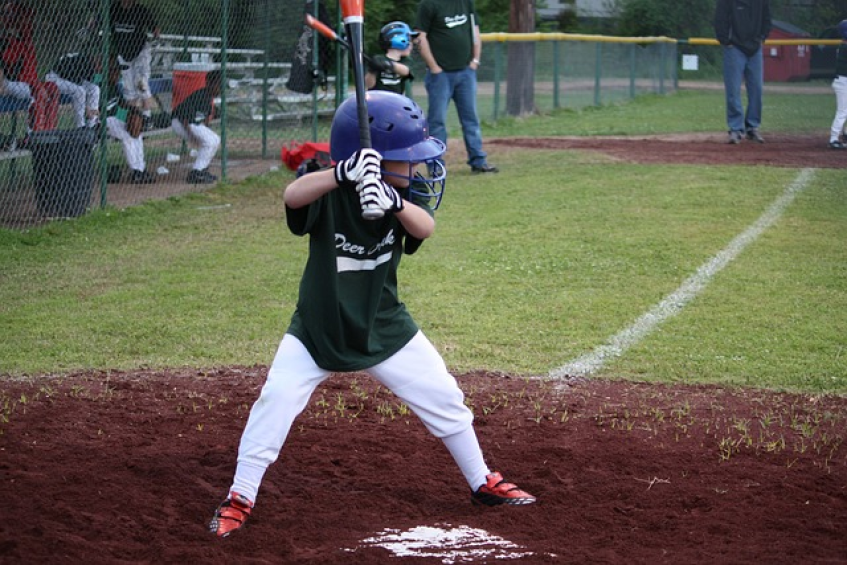
Hello there, fellow baseball enthusiasts! Today we're diving deep into a baseball statistic that's becoming more and more central to the way we understand and appreciate the game – OPS, or On Base Plus Slugging. You've probably heard of it, but what exactly does it mean, and why does it matter so much? That's what we're going to explore.
OPS is essentially a sum of a player's on base percentage (OBP) and slugging percentage (SLG percentage). In baseball, OPS gives us a comprehensive picture of a player's offensive capabilities - it measures not only a player's ability to reach base but also their ability to hit for power. This makes it a particularly valuable tool for comparing players and evaluating performance.
Believe it or not, the concept of OPS has been around for a while. It was initially popularized in the 1980s and 1990s by baseball thinkers like Branch Rickey and Bill James, who were always searching for new ways to quantify and compare player performance. And while OPS might not be the oldest stat in the book, it's certainly grown in importance and is now one of the key metrics used by Major League Baseball teams, fans, and even baseball card collectors.
Over the course of this article, we're going to break down OPS piece by piece, so you can better understand its components and how it's calculated. We're also going to look at OPS in the context of some of baseball's greatest players – from Babe Ruth to Mike Trout – and see what their OPS numbers can tell us about their careers. We'll also go over what makes for a good OPS in baseball, and even touch on some of the highest OPS numbers in baseball history. So, whether you're a seasoned baseball fan looking to deepen your understanding, or you're new to the sport and eager to learn more, you're in the right place. Let's dive in!

As we venture further into the realm of OPS, it's crucial to grasp two key elements that make up this composite statistic: On Base Percentage (OBP) and Slugging Percentage (SLG). It's a simple addition of these two numbers that gives us the OPS.
Let's start with On Base Percentage. OBP is a measure of how frequently a batter reaches base. This doesn't only account for hits, though. It also includes walks (BB) and times the batter was hit by a pitch (HBP). Here's the formula:
OBP = (Hits + BB + HBP) / (At Bats + BB + HBP + Sacrifice Flies)
In simpler terms, OBP calculates the number of times a batter reaches base (excluding instances due to fielding errors or fielder's choice) relative to their total number of plate appearances. So, a player like Ted Williams, who had a knack for reaching base safely (a lifetime OBP of .482), shines brightly when evaluated on this metric.
The second component of OPS is Slugging Percentage. Unlike OBP, which focuses on a player's ability to get on base, SLG is all about power hitting. It measures the total number of bases a player has earned with their hits, giving more weight to doubles, triples, and home runs over singles. Here's the equation:
SLG = Total Bases / At Bats
A player like Babe Ruth, famous for his power at the plate (with a career SLG of .690), shows his value when we consider Slugging Percentage.
By combining these two measurements, OBP and SLG, OPS provides us with a robust view of a player's offensive skills. It doesn't just consider how often a player hits or reaches base, nor does it only look at how far those hits travel. It takes into account both, making it a valuable tool in player evaluation.
But wait, you might be thinking, isn't there a batting average? Well, yes, batting average is a classic baseball statistic, and it certainly has its place. But here's the catch. Batting average only takes hits into account, completely leaving out a player's ability to draw walks or their power hitting. In other words, it doesn't tell the whole story. That's where OPS comes in, presenting a more complete picture of a player's offensive contributions.

With OPS, the higher the number, the better. An OPS of .800 is generally considered above average, while an OPS of .900 or above is outstanding. Achieving an OPS of 1.000 or more over a single season is a feat only the greatest hitters in the game can boast. Names like Babe Ruth, Barry Bonds, and Ted Williams appear on this exclusive list. Let's put that into perspective: the Major League Baseball average OPS has typically hovered around .750 in recent seasons. So, when a player posts an OPS of 1.000, they're truly in a league of their own.
Now let's delve deeper into history. Ross Barnes holds the single-season record for OBP at a staggering .583, achieved in 1876. However, when it comes to lifetime OPS, Babe Ruth takes the crown with an astounding 1.1635, with Ted Williams not far behind at 1.1155. These historical figures help us grasp the significance of high OPS values and the remarkable contributions made by these players to their teams.
To make OPS even more relevant, let's bring it to the modern era. Players like Mike Trout and Bryce Harper consistently rank high in OPS. Trout, for instance, posted an OPS of 1.000 in the 2019 season. He's a perfect example of a well-rounded hitter who combines a high on-base percentage with considerable slugging power.
But just as OPS can highlight a player's offensive prowess, it can also illuminate areas where a player might be struggling. A falling OPS could suggest that a player isn't getting on base as frequently or hitting as powerfully. That said, context is critical in understanding OPS. Factors such as ballpark characteristics, pitching quality, and even weather conditions can impact a player's OPS.
To calculate OPS, we use a simple equation – OBP (On Base Percentage) + SLG (Slugging Percentage). That's the essence of the OPS equation, but what does it entail?
First, let's dive into how to calculate each of the two components of OPS.
On Base Percentage (OBP): This statistic measures how often a batter reaches base. It includes hits, walks (BB), and being hit by a pitch (HBP), with at-bats (AB), walks, hit by pitches, and sacrifice flies (SF) as the denominator. The equation to calculate OBP is (Hits + Walks + HBP) / (AB + Walks + HBP + SF).
Slugging Percentage (SLG): This metric is a measure of the power of a hitter. It calculates the total number of bases a player has gained with hits, taking into account doubles, triples, and home runs, divided by at-bats. The formula for SLG is (1B + 2B + 33B + 4HR) / AB.
Now, just add OBP and SLG, and you have the OPS number.
It's worth noting that calculating OPS does not account for the importance of OBP, which baseball experts argue is more critical to producing runs. However, OPS still provides a useful measure of a player's offensive performance.
To illustrate the calculation, let's use an example. Suppose we have a player with the following stats over a season: AB=500, Hits=140, BB=60, HBP=5, SF=4, 1B=85, 2B=30, 3B=5, HR=20. This player's OBP would be (140+60+5)/(500+60+5+4) = 0.354. The player's SLG would be (85+230+35+4*20)/500 = 0.504. Adding these numbers together, the player's OPS would be 0.354 + 0.504 = 0.858, which is an above-average OPS.

While knowing the formula and the method to calculate OPS is crucial, it's equally important to understand the context of OPS values.
Let's take a look at how OPS values generally break down:
To put these numbers in perspective, let's take a look at some historical players.
For instance, the great Babe Ruth held a career OPS of 1.164, the highest in Major League Baseball history. Ted Williams, another player celebrated for his hitting prowess, had a career OPS of 1.116. The ever-remarkable Lou Gehrig had a career OPS of 1.080.
Among modern players, Barry Bonds finished his career with a staggering OPS of 1.051, while Mike Trout, considered one of the best players of his generation, has an OPS hovering above .990.
For a player with an OPS of 1.000 or above, it's a mark of a truly exceptional hitter, someone who consistently hits for both average and power.
However, it's essential to remember that OPS, like all statistics, isn't perfect. While it offers a useful shorthand for overall batting performance, it doesn't account for some factors such as a player's speed, defensive skills, or their ability to perform in clutch situations.
Now that we've seen what makes for a good OPS in baseball, let's delve into the world of legendary players who've put up the highest OPS numbers in baseball history.
Babe Ruth, widely considered one of the greatest players in the history of baseball, tops the list with a career OPS of 1.164. Ruth's incredible combination of on-base ability and extra base power has kept him atop the OPS leaderboard for nearly a century. His ability to get on base safely and hit for average and power is what makes him a perennial favorite among baseball historians.
Lou Gehrig, another New York Yankees great, posted a career OPS of 1.080. Known as "The Iron Horse," Gehrig was a force to be reckoned with on the diamond. His consistency in reaching base and his power at the plate helped him achieve these impressive numbers.
Ted Williams, another Hall of Famer, has the highest career OPS for any player who started his career after World War II. Williams, who played his entire career with the Boston Red Sox, posted an astounding career OPS of 1.116.
Ross Barnes, though a player from the 19th century whose name may not be as familiar to modern fans, holds a place in OPS history. Barnes was one of the first standout hitters in professional baseball, and his .853 OPS in 1876 stands as the highest in the National League's inaugural season.
While OPS can't tell us everything about a player's offensive contributions, it certainly helps paint a picture of their quality at the plate. For these all-time greats, their legendary OPS figures are just part of what makes them such iconic figures in baseball history.
As much as OPS is a convenient statistic for assessing offensive performance in baseball, it's not without its limitations. Like any other statistic, it should not be the sole metric used to evaluate a player's overall performance.
One of the main criticisms of OPS is that it assumes that one point of on-base percentage (OBP) is equal in value to one point of slugging percentage (SLG). However, most baseball experts would agree that reaching base is more valuable than advancing additional bases. This is why OBP is generally given more weight in more advanced metrics like wOBA (weighted on-base average) and wRC+ (weighted runs created plus).
Another limitation of OPS is that it doesn't account for park factors. Certain ballparks are more conducive to hitting than others due to various factors like altitude, weather, and dimensions. For example, playing half your games at Coors Field in Denver, known for its hitter-friendly environment, could inflate a player's OPS. Conversely, playing in a larger ballpark like Oakland Coliseum could suppress a player's OPS.
Moreover, OPS doesn't differentiate between different types of hits. For instance, a double isn't worth twice as much as a single, and a home run isn't worth four times as much, but that's the assumption that OPS makes when calculating SLG.
OPS also doesn't factor in a player's speed. A speedy player can stretch singles into doubles or doubles into triples, leading to more runs scored for their team. While this ability will show up in their slugging percentage to an extent, it won't be reflected in their on-base percentage.
In spite of these limitations, OPS remains a useful tool for quickly assessing a player's offensive production. It's just important to remember that, like any statistic, it doesn't tell the entire story on its own.
OPS stands for "On-Base Plus Slugging," a statistic used to measure a baseball player's offensive production. It's the sum of a player's on-base percentage (OBP) and their slugging percentage (SLG).
To calculate OPS, add a player's on-base percentage (OBP) to their slugging percentage (SLG). OBP is a measure of how often a player reaches base, while SLG is a measure of a player's power or their ability to hit for extra bases.
A "good" OPS can vary depending on the era and the league, but as a general rule of thumb, an OPS above .800 is considered above average, while an OPS over 1.000 is excellent.
The highest career OPS in baseball history belongs to Babe Ruth, with a staggering 1.164 OPS. However, Barry Bonds holds the record for the single season highest OPS with 1.421 in 2004.
No, OPS is strictly a measure of a player's offensive production. It doesn't take into account a player's baserunning or defensive abilities.

As we've explored in this article, OPS in baseball is a powerful statistic that can provide insight into a player's offensive contributions. However, like any metric, it's not without its limitations. While it may not account for certain factors like baserunning, defensive prowess, or park factors, it's nonetheless a valuable tool in any baseball enthusiast's arsenal.
OPS has truly changed the way we view and analyze baseball players' offensive performance. Whether you're a diehard baseball fan, a casual observer, or a fantasy baseball manager, having a solid understanding of OPS can enhance your appreciation of the game.
The story of OPS is a testament to the evolving nature of baseball and how our understanding of the sport deepens over time. As you continue your journey through baseball, remember that OPS is just one piece of the puzzle. It's the combination of many statistics and the stories behind them that truly bring the game to life.
Chris Sloan is a former baseball league commissioner and travel baseball coach who has made significant contributions to the sport. In 2018, he founded selectbaseballteams.com, a website that helps parents find youth and travel baseball teams in their local areas. Since its launch, the website has experienced impressive growth, offering a wealth of resources including teams, news, tournaments, and organizations. Chris's unwavering passion for baseball and his innovative approach to connecting parents with quality baseball programs have earned him a respected reputation in the baseball community, solidifying his legacy as a leading figure in the world of youth and travel baseball.
There are 0 comments on "OPS in Baseball: A Comprehensive Study"
chandler allen says:
"Hi my name is chandler, i’ve enjoyed..."
On Wanting to tryout for summer ball. as an 18 year old
david graham says:
"With no current MLB team in Canada,..."
On With no current MLB team in
Charles Chavez says:
"To All Coaches: Do you have13U or..."
On Looking for Games